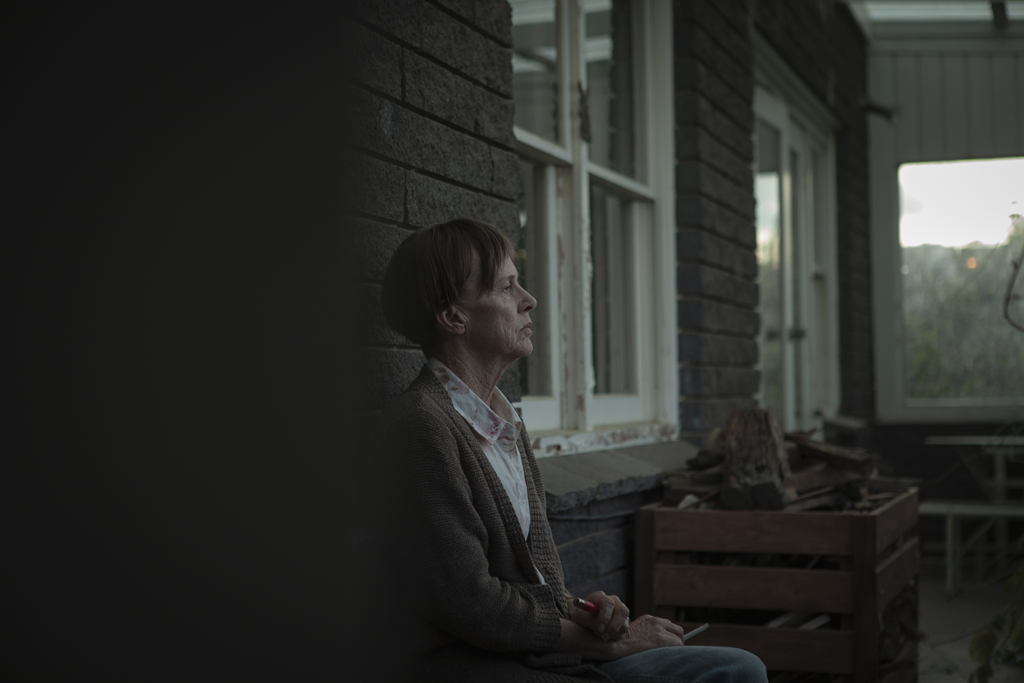Two recent films seek to understand the meaning behind mass shootings, but end up grappling with the unsettling question: What if there isn’t any?

There’s something about this that feels inherently morbid. The idea of invoking a kind of cinema of gun violence, a shared lineage that moves through decades of cinema; the idea that the spectre, and reality, of gun violence looms so large that culture is always trying to find new ways to grapple with what these acts, and their aftermaths, might mean. But as cinema continues to explore these themes – both through real-world stories and fictional ones – their purpose becomes both more complex, and more interesting. Two recent films that grapple with gun violence, Mass and Nitram, seem unified in a kind of thematic uncertainty: both films, in their way, try to understand the meaning and motivations behind the two mass shootings that define them (although both shootings are unseen), all while grasping towards the idea that there might not be any meaning behind them at all. Then, the question shape-shifts from what does it mean to what do I do if it means nothing?
Narratively, Nitram and Mass take place at different points in stories defined by gun violence; Nitram is all about the slow build-up towards an inevitable act, whereas Mass is about the aftermath. Both are an attempt to make sense of an act that’s inherently senseless. Both refuse to offer concrete answers, and are all the better for it.
If there’s a progenitor to the way that film tries to grapple with gun violence, it’s Gus Van Sant’s Elephant(2003). Based in part on the 1999 Columbine massacre, Van Sant’s feels formally similar to Nitram (directed by Justin Kurzel). Both are stripped back; visually stark, and light on dialogue, they each present a march towards the inevitable ending that everyone knows is coming. But what’s interesting about both Elephant and Nitram is the fact that, while they both gesture towards different “causes” for their final massacres, they never settle on one, never oversimplify to the point of saying this is why it happened. They each cast wide nets for their attempts at understanding; Elephant hints at a variety of causes: violent video games; the idea that the perpetrators were bullied; to Nazism. Nitram is similarly vague in ascribing a motive to its eponymous killer; from the frustration running deep in Nitram; his loneliness; his anger at the way that people in his life treat him. In a way that Elephant doesn’t do though, Nitram offers a different alternative to the fact that none of these motivations are enough: the idea that the young man himself might just be evil. Caleb Landry Jones’ performance as the title character contributes to this; he’s often silent, lumbering, and any moment there’s a feeling that he might explode into violence. But it is in these quiet moments, where he appears to be on the cusp of something horrific, that he seems most evil; his heavy, ragged breathing is reminiscent of Michael Myers in Halloween.
The one thing that unifies these two films with the way they grasp towards – potential – motivations, is the culture of guns itself; their ease of access, what they mean as symbols in culture. Elephant shows its two killers buying guns online, and Nitram charts a course from the air rifle that he gets from his Dad, to his eventually, inevitably, buying real guns. That’s the moment where Nitram turns a corner towards a dread that nobody can escape from; when he simply goes to a store to buy guns and ammo. At the London Film Festival screening where I first saw Nitram, someone sat next to me said “oh god” to themselves during this scene; the sense of unease in the room was palpable, the understanding of where it was going, and – in a way – why.
A postscript for the film acknowledges how the events depicted caused Australia to tighten their gun control laws – reforms that were agreed to in under two weeks – something that causes Nitram to stand in stark contrast with these other, American films. But as much as it can offer a coda on regulation, when it comes to meaning itself, Nitram is rendered just as silent as Elephant was almost two decades before it. There are moments, after the off-screen massacre, where news reports acknowledge the struggle to “find something or someone to blame.” Even after watching everything that comes before this moment, no one thing can be pinpointed – although, in the final moments of the film, Nitram’s mother seems to be silently shouldering the blame herself – and another character in a news report simply says “we don’t understand. I guess we never will.”
Fran Kranz’s Mass takes place on the other side of the shooting; with two couples – one the parents of the shooter, the other parents of one of his victims – meeting to, in whatever ways they can, try to understand one another: what it is that they’re living with, what haunts them, and how they try to make peace with it. If they can at all. Mass is, formally, an incredibly simple film: the vast majority of it is four people in a room talking, so it makes sense that this is a film that would interrogate the use or uselessness of language in bridging these primal, unfathomable gaps. Linda (Ann Dowd), the mother of the perpetrator, has dialogue that echoes the frustration and uncertainty of the parents in Nitram: “I didn’t stop him because I didn’t know. I didn’t say anything because I didn’t know what to say. And I’m sorry. I never thought I had enough good to say.” Having “enough good to say” is what lies at the heart of Mass; what we can say and, what if anything, it means. Mass aggressively challenges the empty language and platitudes that so often come in the wake of mass shootings, with gun control activist and grieving father Jay (Jason Isaacs) saying “thoughts and prayers? That’s bullshit.” And of course, he’s right; Mass interrogates language as something used in place of, rather than alongside action. Mass and Nitram approach language in wildly different ways, and this feels rooted in the fact that one takes place after a mass shooting, and the other takes place before it. Dialogue in Nitram is spare, dancing around the issue at the centre because, until the very end, the issue itself doesn’t have a name (if anything, its name is the title character himself; this unfathomable figure capable of heartbreaking violence). But by taking place after the fact, Mass is all about the language that we’re forced to fall back on, and tries to make sense of something that feels fundamentally meaningless.
Taken together, these two films can’t reach an easy endpoint on what meaning exists here, or if there’s any meaning in these events at all, whether in their root causes, or the things that they leave behind. What’s striking about both films is the fact that the shooting itself remains offscreen – an ethical choice for the real-life story of Nitram, a narrative one for Mass – something that brings to the fore just how unfathomable these acts of violence are. That no matter how many directions the finger is pointed in, these acts themselves remain black holes: sucking in everything around them, including meaning. Like Nitram, Mass has something to say about gun control; Jay voices this explicitly. The thing that unites both of these films is this undercurrent of understanding that, while it can’t ascribe meaning to the act, one of the things that give it possibility is the ease with which people can acquire guns. Neither of the two films hinges exclusively on this idea – to do so would be too much of an oversimplification – but they run head-on into it all the same.
The events depicted in Nitram take place three years before the shooting in America that serves as the dramatic spine of Gus Van Sant’s Elephant. Less than two weeks after the events depicted in Nitram, Australian governments passed gun control reforms. It’s been more than two decades since Columbine, and the response to these events in America remains largely the same as it was back then: to offer “thoughts and prayers;” to try and understand the motivation of the perpetrator (often in a way that leads to oversimplification and willful ignorance). One of the things that’s heartbreaking about Mass is the fact that it exists in a world where so little has changed, and it seems to be so difficult for anything to change. That’s what makes meaning so difficult to understand, and to sometimes feel hollow here: how much can anything mean if it isn’t being used as a vehicle for change? The beauty that exists in Mass comes from the fact that, even if nobody here reaches anything like meaning, there is a moment of change here: forgiveness, letting go not of a memory, but the pain associated with it. In a way that seems fitting with both the film’s name and location, the end of Mass feels almost like an exorcism, a way of making peace not only with what happened, but also with the seeming impossibility of ascribing meaning to it.
Sam is a writer, and one of the founding editors of Third Way Press. Their writing on culture and identity has been published by Frieze, the LA Review of Books, Neotext, and other places. They have written two books, All my teachers died of AIDS (Pilot Press, 2020), and Long live the new flesh (Polari Press, 2022).







